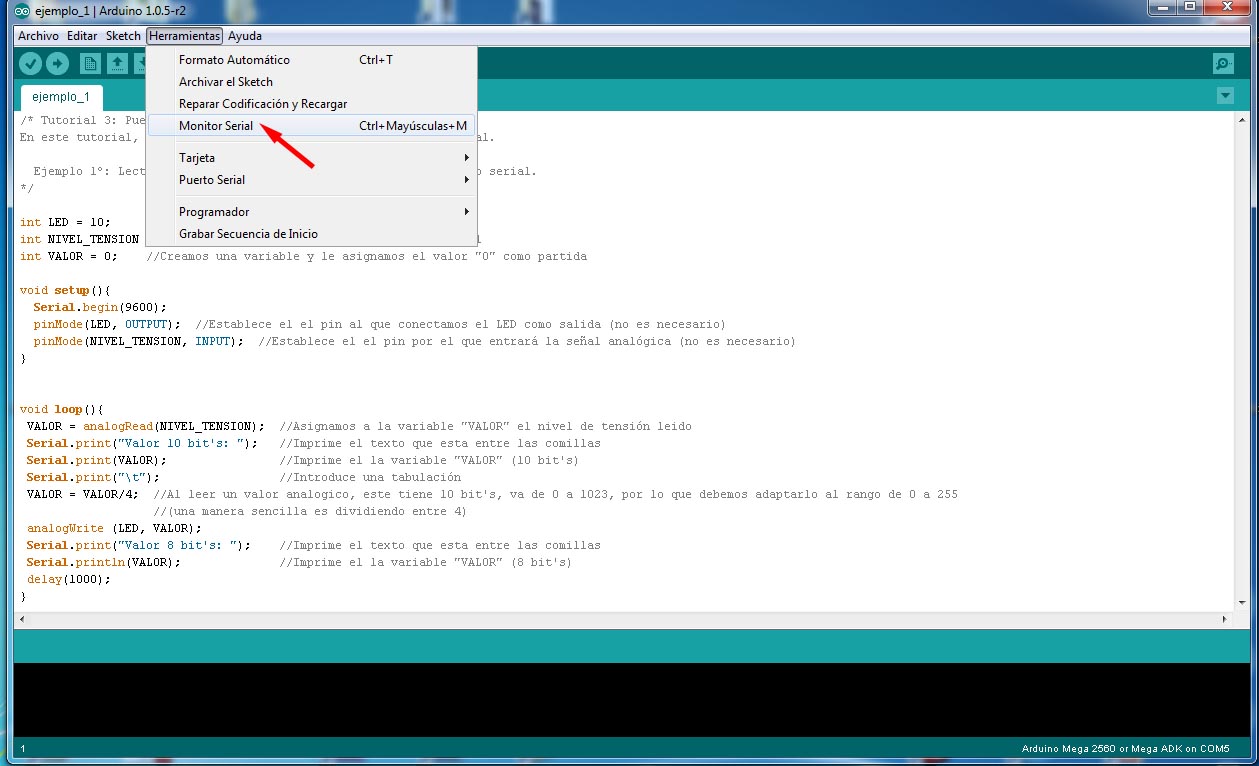Serial: serial port object. See the list of available serial ports for each board on the Serial main page. Speed: in bits per second (baud). Allowed data types: long. Config: sets data, parity, and stop bits. Valid values are: SERIAL5N1 SERIAL6N1 SERIAL7N1 SERIAL8N1 (the default) SERIAL5N2 SERIAL6N2 SERIAL7N2 SERIAL8N2 SERIAL5E1: even. Serial may sound like a tasty breakfast food, but its actually quite different. The word serial means 'one after the other.' For example, a serial killer doesn't stop with one murder, but stabs many people one after the other. Serial data transfer is when we transfer data one bit at a time, one right after the other. Information is passed back & forth between the computer and Arduino. Buy Serial Wi-Fi Wireless -01 Adapter Module 3.3V / 5V Compatible for Arduino from Walmart Canada. Shop for more Wireless USB Adapters available online at Walmart.ca. As of Arduino IDE 1.0, serial transmission is asynchronous. If there is enough empty space in the transmit buffer, Serial.write will return before any characters are transmitted over serial. If the transmit buffer is full then Serial.write will block until there is enough space in the buffer. How to interface a servo motor with an arduino mega2560 using ros? Asked 2016-05-24 05:48:46 -0500.




Arduino To Arduino Serial Communication
- * by zer044 arduino account holder
- * adaptions of Ken Sherriff IrLibary Example code.
- * http://www.arcfn.com/2009/08/multi-protocol-infrared-remote-library.html
- //ir reciver bit
- // define codes
- #define Button_1 0xFF30CF // 1 on remote
- #define Button_3 0xFF7A85 // 3 on remote
- IRrecv irrecv(RECV_PIN);
- int levelPins[]={
- int colPins[]={
- int x=0;// A COUNTER
- int pressed1=0;
- //ir receiver bit
- irrecv.enableIRIn();// Start the receiver
- //led cube bit
- for(int i=0; i<3; i++){
- }
- pinMode(colPins[j], OUTPUT);
- }
- void loop (){
- if(irrecv.decode(&results)){
- Serial.write('Button 1 pressedn');
- break;
- Serial.write('Button 2 pressedn');
- break;
- case Button_3:
- spinthroughlayers ();
- case OFF:
- allOff();
- Serial.println(results.value, HEX);
- irrecv.resume();// Receive the next value
- }
- }
- // all functions start here..
- * list of current functions
- * scrollupanddown ();
- **/
- // function turns all leds off
- void allOff (){
- digitalWrite(colPins[j], LOW);
- for(int i=0; i<3; i++){
- }
- //function to turn an LED on.
- digitalWrite(levelPins[x], LOW);
- delay(t);
- digitalWrite(levelPins[x], HIGH);
- for(int i=0; i<3; i++){
- ledOn(i,j,30);
- }
- }
- void spinthroughlayers (){
- while(x<30){
- ledOn(1,3,4);
- ledOn(1,4,4);
- ledOn(2,4,4);
- ledOn(1,5,4);
- x++;
- delay(50);
- //second layer
- ledOn(0,6,4);
- ledOn(2,6,4);
- ledOn(0,4,4);
- ledOn(0,2,4);
- ledOn(2,2,4);
- }
- x=0;
- while(x<30){
- ledOn(1,7,4);
- ledOn(1,4,4);
- ledOn(2,4,4);
- ledOn(1,1,4);
- x++;
- delay(50);
- // forth layer
- ledOn(0,8,4);
- ledOn(2,8,4);
- ledOn(0,4,4);
- ledOn(0,0,4);
- ledOn(2,0,4);
- }
- x=0;
- for(int d=0; d<3; d++){
- ledOn(d,0,4);
- ledOn(d,2,4);
- ledOn(d,4,4);
- ledOn(d,6,4);
- ledOn(d,8,4);
- }
- x=0;
- for(int d=2; d>-1; d--){
- ledOn(d,0,4);
- ledOn(d,2,4);
- ledOn(d,4,4);
- ledOn(d,6,4);
- ledOn(d,8,4);
- }
- x=0;
- }

